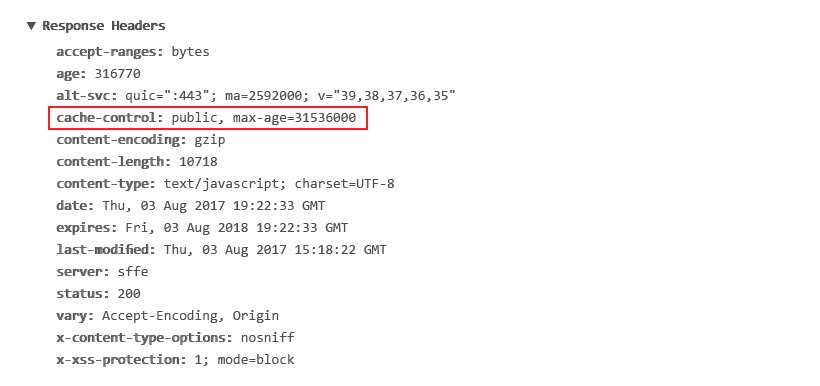
This means that using conditional request headers like If-Modified-Since and If-None-Match will not have an effect. Immutable directive tells the caching servers and client that response will never change.

Only-if-cached tells caching servers to respond with resources from cache only. Min-fresh= request header directive tells the caching server that browser (client) wants the resource that will be valid for at least X number of seconds. Number of seconds in it defines the maximum time for which the resource should be stale. Max-stale is a request header directive that indicates that browser (client) can accept stale/expired resource from caching server. S-maxage= instructs caching servers (not affecting private caches - clients) to override the max-age and Expires. Numbers of seconds in this directive is relative to time of the request. Max-age= tells caching servers and client cache for how long the response should be cached. Must-revalidate directive instructs browsers (client caches) to revalidate the cached response after it expires. Proxy-revalidate directive instructs caching servers that after cached response expires server must revalidate successfully with the origin server. Only browser! Caching servers between client and server will not be affected by this directive. Private directive instructs browser to cache the response.

It's important to note that even non-cacheable response will be cached. Public directive tells every caching server between client and server it is ok to cache the response. This directive overwrites any other directive that might seem as bypassing option for no-store. No-store prevents caching of the response anywhere. This functionality will be prevented by using no-transform. The answer is - servers with specific functionality of optimizing the response for better performance. We could be curious why would any caching server change the body. No-transform forbids caching servers between client and server to change the body of the response. In reality, it does behave like it's forbidding caching because of the revalidation process. It is wrongly interpreted as a directive that forbids caching. Otherwise, the resource is going to be cached with mandatory revalidation. No-cache directive tells the server it goes through that it can be cached, however, it must be revalidated with the server it originates from.

Private cache control header how to#
How does Cache-Control Headers affect responsesĮvery header value CCH contains a directive that carries specific instructions on how to handle the response in the cache: Now, let see some of the common response Cache-Control Headers: Let's check out some common request Cache-Control Headers: Response headers are doing the same for the client. Request headers contain directives that dictate how the cache on the server is behaving. Both header types are used to control the cache, on the server, or on the client-side.

So, we then have request and response headers. Headers, in general, regardless of the type can be seen in HTTP requests as well as in HTTP responses. CCH is the HTTP header type and it can be seen in action in the browsers. Cache-Control Headers (CCH) are used between the server and the client.


 0 kommentar(er)
0 kommentar(er)
